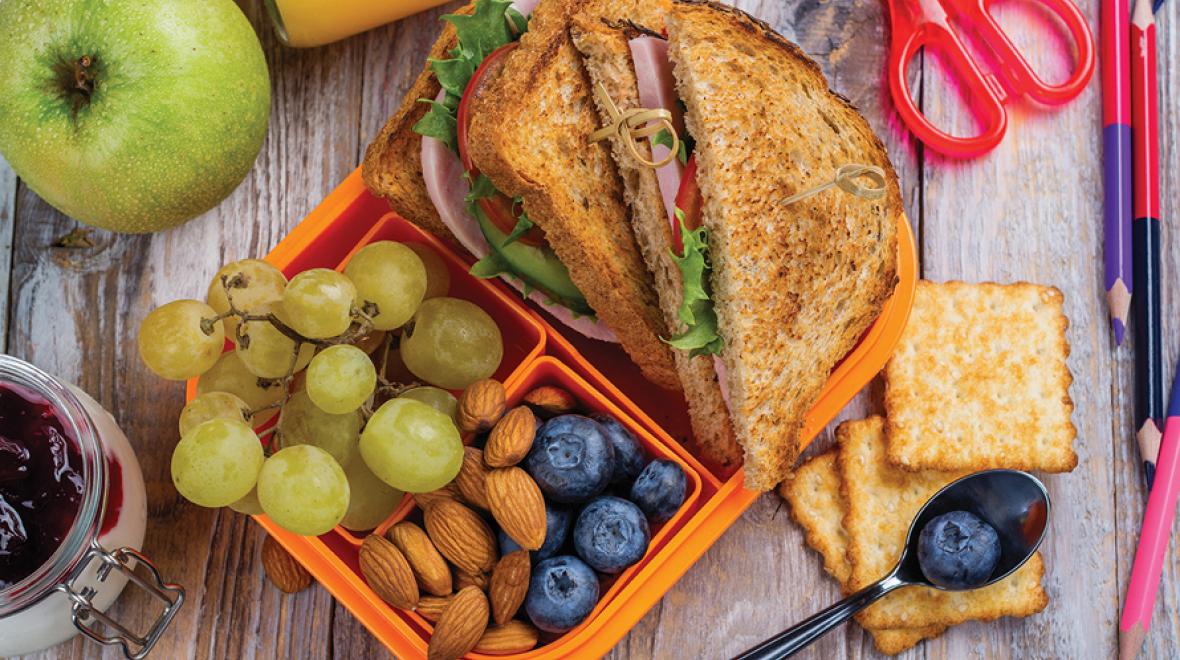Practical Back-to-School Tips From Local Experts

Three squares: Jackie Freeman
“I love my kids and I want to feed them healthy meals, but I have other things to do, too,” says professional chef and food stylist Jackie Freeman. This mom of a young daughter and two stepsons has worked in restaurants and catering; developed recipes for PCC Community Markets; hosted an online cooking show for ParentMap called “Healthy Kids Cook” and is the author of three cookbooks. Here are Freeman’s top 10 tips for feeding kids healthy food they’ll actually eat three times a day (plus snacks) while leaving room in your schedule for the other things you have to do.
1. Plan ahead
It takes more time up front, but Freeman plans her family’s meals for the entire week in advance. The hour she spends on Sunday nights making a meal plan and grocery list saves her from making multiple trips to the store during the week and eliminates the stress of figuring out what to make at the last minute. She keeps it real by planning for restaurant takeout or rotisserie meals from the deli once or twice a week on the days she knows will be busiest.
2. Shop smart
Freeman says, “Always shop with a list.” She organizes her shopping list by grocery store section — meats, produce, dairy, etc. Then when she shops, she only makes one pass through the store and has everything she needs for the whole week, with no backtracking for forgotten or overlooked items.
3. Stock up
“I keep pantry staples on hand at all times — tomato sauce, chicken stock, pasta,” she says. That way, she’s always prepared when things don’t go to plan. Another fail-safe: making double batches of planned meals and freezing the extra portion. Whether you keep those extra meals frozen for emergencies or plan to eat them next week, “cook once, eat twice” is just good math.
4. Prep ahead
When she has time on the weekends, Freeman will chop a week’s worth of onions (she knows how much she needs because of the meal plan) and fill the rice cooker. She also makes school lunches the night before, at the same time she’s making dinner. Her kids don’t like leftovers for lunch, but she can prep extra fruits and vegetables for the lunch boxes while she’s preparing a dinner sauce or salad, and make sandwiches while dinner is in the oven. That way, she only has to clean up the kitchen once.
5. Use bento boxes
Bento boxes with four or five compartments are perfect for building lunches, because they invite variety and help control portion sizes. “The biggest compartment should just hold half a sandwich,” says Freeman. If you put anything bigger in a lunch box, kids probably won’t eat it. Put a different food group in each of the other compartments and you’ve got a balanced meal.
6. Make food bite-size and leave it unwrapped
It isn’t a time-saver, but it is a sanity-saver if throwing away your kids’ uneaten lunches at the end of the day is driving you crazy. Make sure everything is bite-size and unwrapped. Cut sandwiches into quarters, peel fruit, even open the string cheese wrapper. Kids are in a hurry to get to recess, and the faster they can eat, the more likely they are to do it.
7. Find a formula that works for breakfast
Freeman says, “Save the smoothies and waffles for weekends. We do the same thing for breakfast every day.” Her kids know the formula: They have to eat a protein, a carb and a fruit. She keeps two or three easy choices in each category on hand and lets her kids pick from among the options.
8. Maintain a snack stash
Keep a supply of healthy snacks hidden in the car for emergencies. Also, store the snacks at home in one designated space. Freeman has a “snack cupboard” in the kitchen where she keeps all the permitted snacks in one place. Her kids can help themselves at snack time, and they know that anything they find elsewhere in the kitchen is off-limits.
9. Talk about food
If your kids aren’t eating their lunch, ask them why. You might learn about their day (“I didn’t have time because my friends were playing”) or you might learn something you can use to make lunch better. Maybe your kid likes strawberries but not blueberries, or prefers sandwiches without mustard. Picky eating can be its own problem, but as long as your kids’ food requests conform to the protein/carb/fruit rule, try to accommodate their preferences. “It’s very satisfying when they come home with an empty lunch box,” says Freeman.
10. Foster food independence
If you keep a handful of preapproved items in each of the protein/carb/fruit categories available, you can let kids pick among the options. “It gives them independence and eliminates fighting,” she says. If that means sliced turkey and Goldfish crackers at breakfast, so be it — as long as they also eat a fruit. It won’t take long before you can remove yourself from the breakfast and snack equations entirely.
Up next: Homework helper: Paul Schurr











